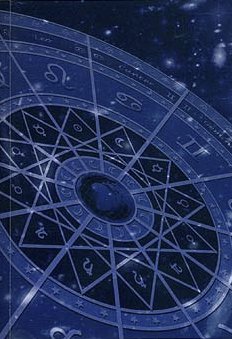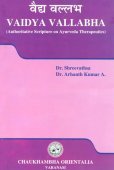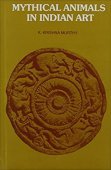Nagapura, Nāgapura, Naga-pura: 14 definitions
Introduction:
Nagapura means something in Hinduism, Sanskrit, Jainism, Prakrit, the history of ancient India. If you want to know the exact meaning, history, etymology or English translation of this term then check out the descriptions on this page. Add your comment or reference to a book if you want to contribute to this summary article.
In Hinduism
Purana and Itihasa (epic history)
Source: archive.org: Puranic EncyclopediaNāgapura (नागपुर).—A place situated on the basin of the river Gomatī in Naimiṣāraṇya. It is mentioned in Mahābhārata, Śānti Parva, Chapter 355, Stanza 3, that in this place, a Nāga named Padmanābha lived.

The Purana (पुराण, purāṇas) refers to Sanskrit literature preserving ancient India’s vast cultural history, including historical legends, religious ceremonies, various arts and sciences. The eighteen mahapuranas total over 400,000 shlokas (metrical couplets) and date to at least several centuries BCE.
Kavya (poetry)
Source: Wisdom Library: KathāsaritsāgaraNāgapura (नागपुर) is the name of an ancient city, according to the Kathāsaritsāgara, chapter 121. Accordingly, as Indra cursed Kalāvatī: “... since, out of love, thou didst secretly bring here the man who has reduced the goat to this state to make him dance, depart and become an image on a pillar in the temple built by King Narasiṃha in the city of Nāgapura. [...] and he thus fixed an end to the curse: ‘When that temple [in Nāgapura], which it has taken many years to complete, shall perish and be levelled with the ground, then shall her [Kalāvatī’s] curse come to an end’”.
The Kathāsaritsāgara (‘ocean of streams of story’), mentioning Nāgapura, is a famous Sanskrit epic story revolving around prince Naravāhanadatta and his quest to become the emperor of the vidyādharas (celestial beings). The work is said to have been an adaptation of Guṇāḍhya’s Bṛhatkathā consisting of 100,000 verses, which in turn is part of a larger work containing 700,000 verses.

Kavya (काव्य, kavya) refers to Sanskrit poetry, a popular ancient Indian tradition of literature. There have been many Sanskrit poets over the ages, hailing from ancient India and beyond. This topic includes mahakavya, or ‘epic poetry’ and natya, or ‘dramatic poetry’.
Jyotisha (astronomy and astrology)
Source: academia.edu: Tessitori Collection I (astronomy)Nāgapura (नागपुर) is the name of an ancient city, according to the Śanīkathā (classified as literature dealing with astronomy, astrology, divination, medicine), which is included in the collection of manuscripts at the ‘Vincenzo Joppi’ library, collected by Luigi Pio Tessitori during his visit to Rajasthan between 1914 and 1919.—The present work was composed in VS 1820 by Jivanadāsaka Bhīvāṇī, son of Hukamarāya, inhabitant of Nāgapura (= Nāgpur? or Nagaur?). This is how we understand vs. 162. Both the copyist and the reader seem to be ladies.

Jyotisha (ज्योतिष, jyotiṣa or jyotish) refers to ‘astronomy’ or “Vedic astrology” and represents the fifth of the six Vedangas (additional sciences to be studied along with the Vedas). Jyotisha concerns itself with the study and prediction of the movements of celestial bodies, in order to calculate the auspicious time for rituals and ceremonies.
In Jainism
General definition (in Jainism)
Source: archive.org: TrisastisalakapurusacaritraNāgapura (नागपुर) is the name of an ancient city, according to chapter 5.4 [śāntinātha-caritra] of Hemacandra’s 11th century Triṣaṣṭiśalākāpuruṣacaritra: an ancient Sanskrit epic poem narrating the history and legends of sixty-three illustrious persons in Jainism.
Accordingly, as Megharatha related:—“[...] One day they (i.e., Dhana and Nandana) bowed to Sāgaradatta and said, ‘Father, command us to go to a foreign country to trade’. Their father, pleased, gave them his permission immediately. For manliness on the part of the son is a delight of first rank to the father. Taking merchandise of many kinds, they set out with a caravan; and came in course of time to a large city, Nāgapura. [...]”.

Jainism is an Indian religion of Dharma whose doctrine revolves around harmlessness (ahimsa) towards every living being. The two major branches (Digambara and Svetambara) of Jainism stimulate self-control (or, shramana, ‘self-reliance’) and spiritual development through a path of peace for the soul to progess to the ultimate goal.
India history and geography
Source: archive.org: Gazetteer of the Bombay PresidencyNāgapura is the name of an ancient locality possibly corresponding to the modern Nāgaon, as mentioned in the “copper-plate charter from Khārepāṭaṇ in the Ratnāgiri District” (1095 A.D.).—The command contained in it is addressed to, amongst others, the people of the town of Hañjamana. And the object of it was to release certain tolls on carts coming into Sthānaka, Nāgapura (very possibly the modern Nāgaon, about six miles south-east of Alībāg), Surpāraka (Sopārā near Bassein), Cemūli (Chaul in the Kolāba District), and other sea-ports in the Koṅkaṇ fourteen-hundred. The record describes Anantadeva as “casting into the ocean of the edge” of his sword these fierce heaps of sin who, at a time of misfortune due to the hostility of relatives, obtained power and devastated the land of the Koṅkaṇ, harassing gods and Brāhmans.
Source: What is India: Inscriptions of the ŚilāhārasNāgapura is the name of a village (port) mentioned in the “Kharepāṭaṇ plates of Anantadeva I”. Nāgapura may be modern Nāgāv, 6 miles south-east of Alibāg as suggested by Fleet, in the Kolābā District.
These copper plates (mentioning Nāgapura) were in the possession of Mr. Ramachandra Sivram Desai of Khārepāṭaṇ in Ratnāgiri District, Mahārāṣṭra. It is dated on the first tithi of the bright fortnight of Māgha in the Śaka year 1016, the cyclic year being Bhāva.
Source: What is India: Annual Report on Indian Epigraphy (1945-1952)Nagpur is an archaeologically important site situated in Jabalpur district (Madhya Bharat), known for inscriptions regarding the ancient history of India. For example, at Nagpur there is a Sanskrit inscription on a Buddhist bronze image at the Nagpur Museum which reads Droṇāditya. The Buddhist formula is found engraved on the back. In characters of about the 10th century.
Source: Marathi language (Marāṭhī bhāṣā): Submission for Classical Status of Marathi LanguageNagpur is the name of a district in Maharashtra.—The Buddhist work, Mahavamsa, refers to Maharashtra. It suggests that a big area around Ujjain, that is, the present Central India could have been talked about as Maharashtra. As the legend goes there were (or might have been) 99,000 villages in this country. These days it is a practice to include all areas (Nagpur) where Marathi language is in use into Maharashtra.
Source: Jainworld: Jain History (h)Nāgapura (नागपुर) is another name for Nagaur: the chief town of the District of the same name, situated in Jodhpur Division.—Nagaur was known by various name such as Nāgapura, Nagapattana, Ahipura and Bhujaṅga-nagara. From the literary sources, it is known as a great centre of Jainism.

The history of India traces the identification of countries, villages, towns and other regions of India, as well as mythology, zoology, royal dynasties, rulers, tribes, local festivities and traditions and regional languages. Ancient India enjoyed religious freedom and encourages the path of Dharma, a concept common to Buddhism, Hinduism, and Jainism.
Languages of India and abroad
Sanskrit dictionary
Source: DDSA: The practical Sanskrit-English dictionaryNāgapura (नागपुर).—
1) Hastināpura.
2) Name of a city in Pātāla.
Derivable forms: nāgapuram (नागपुरम्).
Nāgapura is a Sanskrit compound consisting of the terms nāga and pura (पुर).
Source: Cologne Digital Sanskrit Dictionaries: Cappeller Sanskrit-English DictionaryNāgapura (नागपुर).—[neuter] = hāstinapura.
Source: Cologne Digital Sanskrit Dictionaries: Monier-Williams Sanskrit-English DictionaryNāgapura (नागपुर):—[=nāga-pura] [from nāga] n. Name of a town (= hāstina-pura), [Atharvaveda-pariśiṣṭa; Mahābhārata]
[Sanskrit to German]
Sanskrit, also spelled संस्कृतम् (saṃskṛtam), is an ancient language of India commonly seen as the grandmother of the Indo-European language family (even English!). Closely allied with Prakrit and Pali, Sanskrit is more exhaustive in both grammar and terms and has the most extensive collection of literature in the world, greatly surpassing its sister-languages Greek and Latin.
See also (Relevant definitions)
Starts with: Nakapuram.
Ends with: Venagapura.
Full-text (+40): Kakatiyarudra, Nagaur, Nagapurimahatmya, Nagapuri, Ramagiri, Jivanadasaka, Kayatha, Hukamaraya, Edagiri, Sutada, Subahu, Hiranyabahu, Karanja, Gangadharakavi, Shulanadi, Grewia helicterifolia, Dashapura, Sadashivabhatta, Cudamani, Udayasundara.
Relevant text
Search found 28 books and stories containing Nagapura, Nāgapura, Nagpur, Nāga-pura, Nāgpur, Naga-pura; (plurals include: Nagapuras, Nāgapuras, Nagpurs, puras, Nāgpurs). You can also click to the full overview containing English textual excerpts. Below are direct links for the most relevant articles:
Puranic encyclopaedia (by Vettam Mani)
Manusmriti with the Commentary of Medhatithi (by Ganganatha Jha)
Verse 7.193 < [Section XIII - War]
Mahabharata (English) (by Kisari Mohan Ganguli)
Impact of Vedic Culture on Society (by Kaushik Acharya)
Sanskrit Inscriptions (A): The Vākāṭakas < [Chapter 3]
Sanskrit Inscriptions (J): The Rāṣṭrakūṭas < [Chapter 3]
Chart: Movement of Vedic Brāhmaṇas < [Chapter 3]
Trishashti Shalaka Purusha Caritra (by Helen M. Johnson)
Part 9: Dispute over meaning of aja < [Chapter II - Rāvaṇa’s expedition of Conquest]
Part 4: Early life of Kaṃsa < [Chapter II - Marriages of Vasudeva with maidens]
Part 3: Story of Kīrtidhara and Sukośala < [Chapter IV - The, birth, marriage, and retreat to the forest of Rāma and Lakṣmaṇa]
Unification of the Maharashtra < [December 1938]
Our Forum < [July-August 1932]
Eknath Ranade: The Man and his Mission < [October – December, 1982]
Related products

